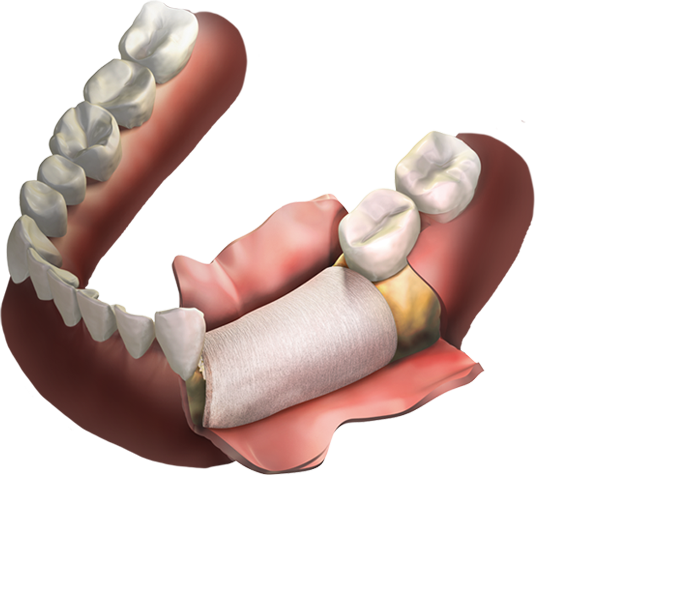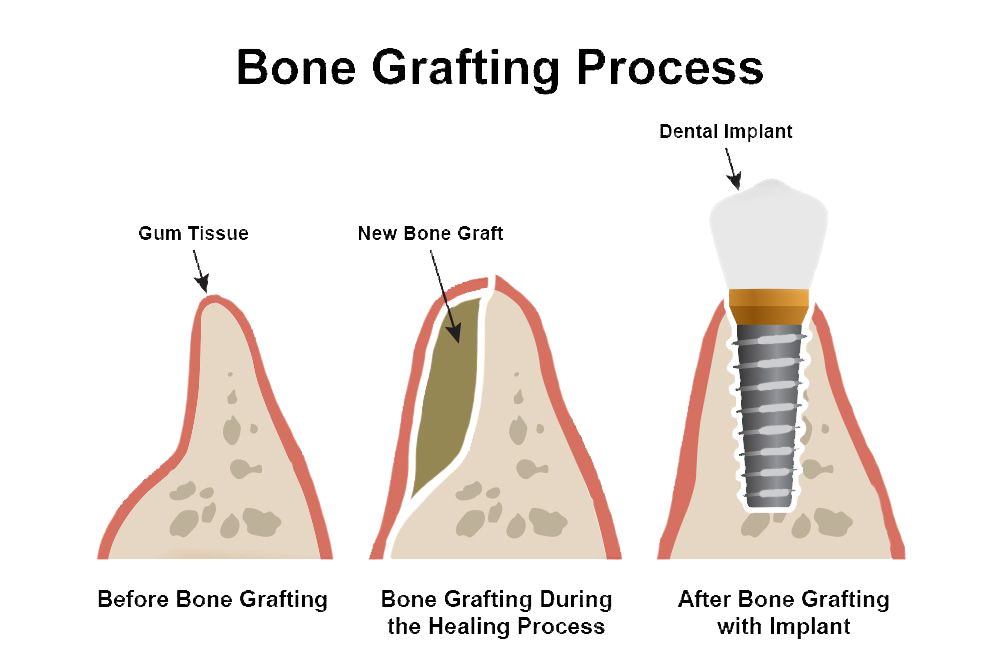
Bone Grafting
Dental implants are usually the best option for tooth replacement. However, some patients do not qualify due to bone deterioration.
Dr. James Slaman in Albuquerque, NM, can perform or coordinate bone grafting to help patients with bone deterioration qualify for implants.
Let's take a closer look...

Why does bone loss occur?
Tooth Loss Leads to Bone Atrophy
When natural tooth roots are present, they actively stimulate nerves within the jaw, keeping the bone dense and healthy. Once the tooth is gone, there is no stimulation. As a result, the bone tissue slowly deteriorates.
In some cases, patients may lose as much as 25 percent of their bone height within the first year of losing a tooth.
Inadequate density makes it difficult to predictably place a dental implant because the implant post must be completely embedded into strong, healthy bone tissue for adequate support. In cases of insufficient density, a dental bone grafting procedure (also known as a "sinus lift" when performed near the sinuses on the upper jaw) can be performed to restore your eligibility for implant treatment.
Why Choose Dr. James Slaman DDS, PC for Bone Grafting?
Dentistry is more than just a job to Dr. Slaman – it is his passion. Therefore, patients who choose our practice in Albuquerque, NM, can feel confident they are receiving the highest quality of care possible.
Because methods and technologies are constantly evolving, Dr. Slaman is dedicated to attending courses in continuing education. This allows him to stay up-to-date on the latest bone graft innovations and offer our patients the most accurate, predictable care available.
We also understand the importance of convenience. Depending on the complexity of your case, you may be eligible to complete bone grafting, implant surgery, and placement of final restorations all in one single location.

How does dental bone grafting work?
Timeline of the Bone Grafting Process
When you inquire about implants at our comfortable office in Albuquerque, NM, Dr. Slaman will use our GALILEOS® ComfortPLUS cone beam scanner to assess the quality and density of your jawbone. If he determines that you lack sufficient tissue to support implants, he will likely recommend that you receive some kind of bone graft.
Depending on your level of bone loss, he may place a graft himself, or he may refer you to a trusted local specialist. When it is time for your procedure, you can expect:
For most patients, a graft heals within four to six months.

Healing, Recovery, and New Bone Generation
In most cases, approximately four to six months of healing is required following a bone graft procedure. During this time, the graft will serve as a matrix while your body regenerates bone tissue. It is important to avoid smoking during the healing phase, since tobacco products can seriously hinder the success of your treatment as well as the placement of dental implants.
5-Star Reviews From Happy Patients
Dr. Slaman and his staff are incredibly thorough and does an amazingly detailed jog. Very happy with how I was treated and his office is very nice.
This is the first time in 50 years that I love going to the dentist. Dr. Slaman is so caring. His associates all professional and fun. Always have great results.
Clinical Research
Many patients are surprised to hear they may require a preparatory procedure before receiving implants. However, bone grafting is a common treatment. This procedure is also incredibly effective. A study published in 2016 concluded that survival rates of dental implants are the same in patients with native bone tissue as patients with bone grafts.








